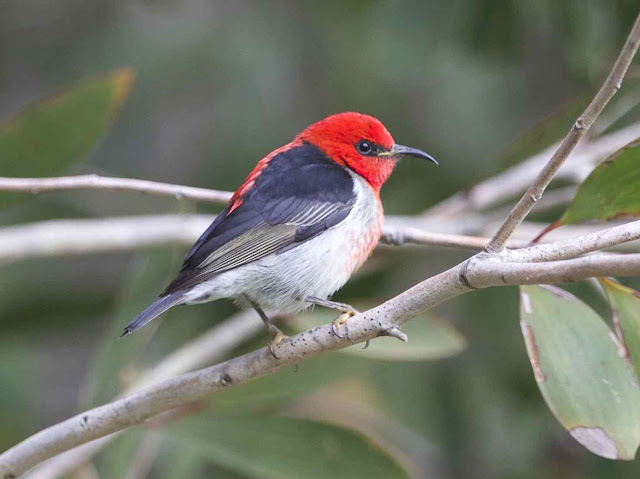After five mostly wet days in
Byron Bay we headed north past the Gold Coast, Brisbane and the Sunshine Coast
to Rainbow Beach, a small coastal town that is the southern access to Fraser
Island. Hervey Bay further north at the northern end of Great Sandy Strait is
the other point of access. Two ferries transport 4WD vehicles across the narrow
part of Great Sandy Strait from Inskip Point to Hook Point on the southern tip
of Fraser Island. Due to deep sand in many places, including reaching the
ferries at Inskip Point, only high clearance 4WD vehicles can access Fraser
Island.
Fraser Island is the world’s
largest sand island and due to its unique natural history and relative pristine
condition is a designated World Heritage site. Also Great Sandy Strait, a large
waterway and wetland area between Fraser Island and the mainland, is a declared
Ramsar site due to its importance for migratory shore birds. Ramsar is a city
in Iran where an international agreement was signed to protect migratory birds.
Australia is a signatory.
We are going to spend a few days
exploring Fraser Island and will leave the van at Rainbow Beach and camp with a
tent.
On our one fine day in Byron Bay
I managed to get out with the camera and found some honeyeaters in a patch of
flowering melaleucas (this genus is also know by the common name paperbark, an
apt and obvious name given the papery bark).
There were Noisy and Little
Friarbirds, Little Wattlebirds and Lewin’s, White-cheeked, Blue-faced, Brown
and Scarlet Honeyeaters present. All have distinctive and easily recognizable
calls. Finding the birds and nailing some photos is not easy as all of these
birds tend to be a little shy and very active, perhaps even hyperactive which
may be due, as nectar feeders, to their high sugar diets.
The Brown Honeyeater is not found
in East Gippsland however it is a common honeyeater (HE) found over large areas
of Australia and a wide range of habitats. For its small size this HE has a
very loud and frequent call and must expend a large amount of vocal energy.
 |
| The Brown Honeyeater is a rather plain bird however its clear, ringing, musical voice delivered in loud erratic bursts leaves no doubt about its presence. |
The Scarlet Honeyeater is found
east of the Great Dividing Range from near Cooktown all the way south to a
little west of Melbourne. Around Byron Bay and again here at Rainbow Beach they
are very numerous and as for the Brown HE’s they seem to be feeding on a
flowering melaleuca species. This honeyeater species is a somewhat sporadic
summer visitor to Victoria with small numbers most summers however in the
summer of 2010/11, coinciding with a massive flowering of most species of
eucalyptus across Gippsland, a large number of Scarlet honeyeaters turned up in
Victoria. For an extremely brightly coloured bird, and in spite of their
frequent distinctive calls, they are surprisingly hard to find.
 |
| The female Scarlet Honeyeater is plain brown with a touch of red on the throat and ear. |
 |
| The male Scarlet Honeyeater - a stunning bird. |
 |
| This shot shows the red on the breast becoming scaly. |
On our first morning at Rainbow
Beach we made the short drive to Inskip Point to check out the Fraser Island ferry access and
to look for the Black-breasted Button-Quail. Due to a combination of school
holidays, a fishing competition and the usual winter migrants (Grey Nomads etc)
the area was saturated with people so it was not surprising we did not find the
Button-Quail. We did find a Little Shrike-thrush, a new bird species for us,
and a couple of other subjects for the camera.
 |
| This Little Shrike-thrush was systematically foraging in the long tangles of lichen growing on the native cypress pines at Inskip Point. |
 |
| This race of White-browed Scrubwren (laevigaster) has a black face - very different to the south eastern Australian race (frontalis) which has a grey face. |
 |
| Same bird as above - the eye coverts stand out in this pose - they are held out during displays to enhance the bird's beauty. |

What a beautiful bird the Scarlet Honeyeaters is!
ReplyDeleteI have just found your blog, courtesy of Gouldiae.
ReplyDeleteFabulous bird images.
Well done. I shall be back.
Denis Wilson